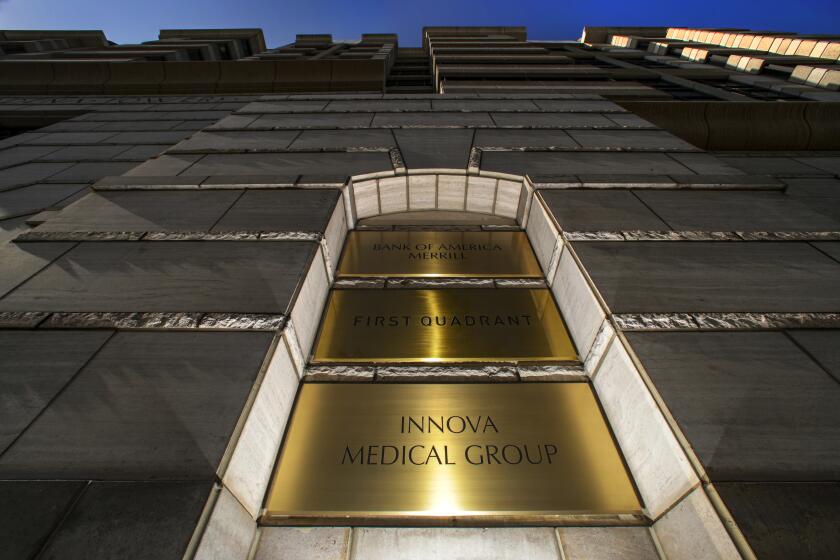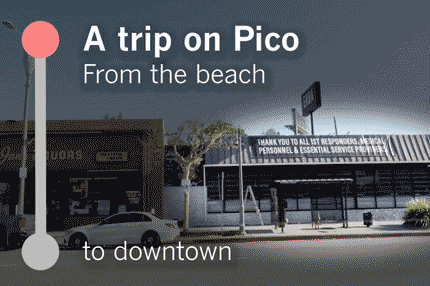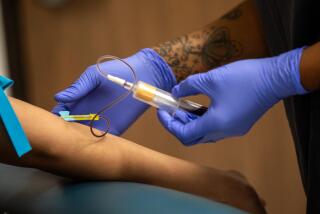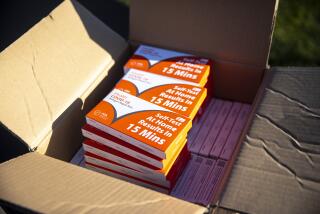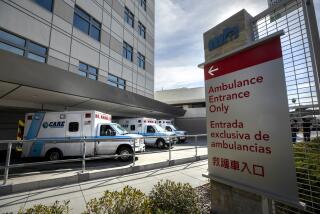Column: Coronavirus tests are supposed to be free. But there’s a nasty loophole in the law
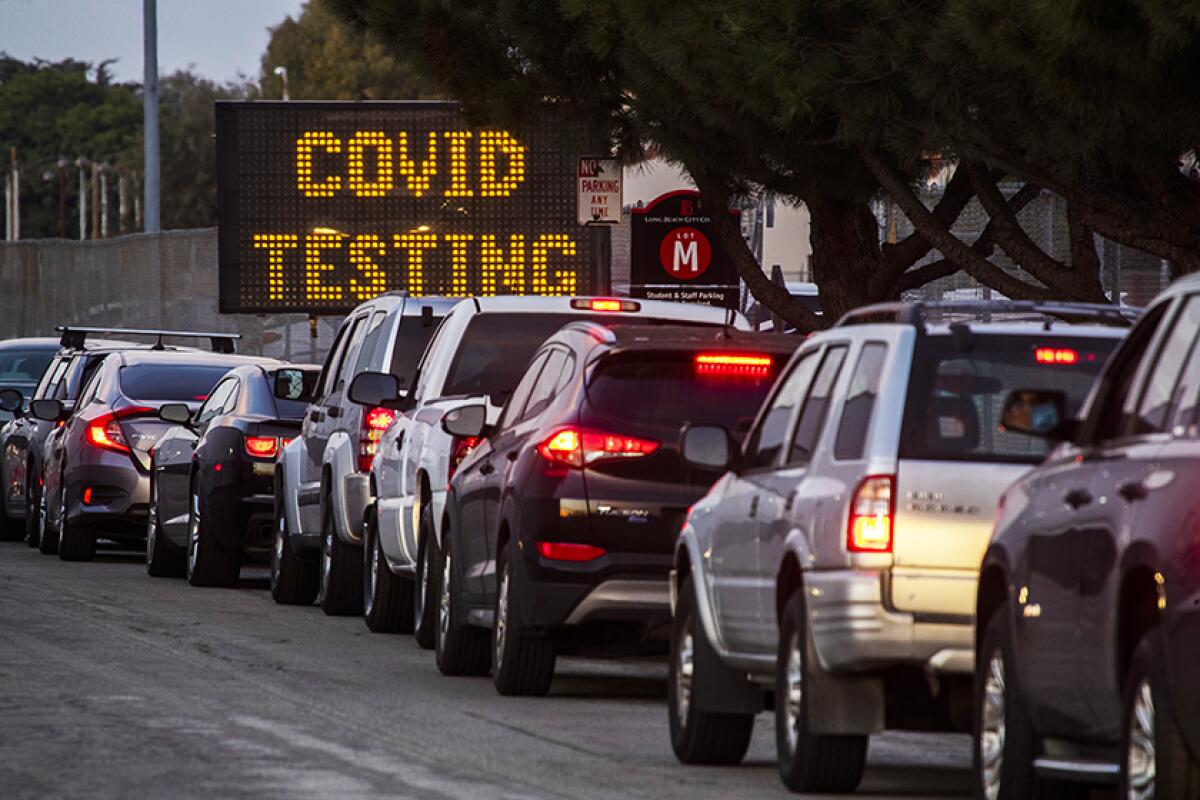
Free testing was supposed to be a fundamental aspect of America’s response to the COVID-19 pandemic.
The Families First Coronavirus Response Act and the Coronavirus Aid, Relief and Economic Security Act explicitly state that patients aren’t responsible for the cost of being tested for the virus.
So why, a colleague asked me the other day, did his wife have to pay $47.50 for her coronavirus test at a Southern California CVS drugstore after she returned from a recent trip to Florida?
The answer to that highlights a gaping legal hole that makes testing fees possible — even when federal laws declare that no such fees should be charged.
It also demonstrates, yet again, the foolishness of a $4-trillion healthcare system that allows insurers to pick and choose which providers they’ll reimburse and which ones they won’t.
“This is a loophole in COVID testing that should be fixed immediately,” Gerald Kominski, a research professor of health policy and management at UCLA, told me.
Innova Medical Group in Pasadena secured contracts worth at least $2.7 billion selling Chinese-made antigen tests to the U.K. government despite questions over their accuracy.
Under federal law, all public and private insurance plans must fully cover any coronavirus test approved by the Food and Drug Administration. That’s supposed to mean no out-of-pocket costs for patients.
But the law doesn’t address reimbursement if a test provider sends the swab to a lab that’s outside an insurer’s coverage network.
This is what happened with my colleague’s wife. CVS sent her test to an out-of-network lab with which it has a business relationship. The lab billed her insurer an unexpectedly high amount for the test.
The insurer covered the bulk of the cost and then passed along $47.50 of the charge to the patient.
CVS Health says such fees aren’t its fault or the fault of labs it uses.
“You would need to connect with the patient’s insurance carrier to determine why they have opted not to cover the lab fees,” said Joseph Goode, a spokesperson for the pharmacy chain.
The insurance industry has known about this loophole for months — and insists these charges aren’t insurers’ fault either.
In a recent report titled “Price Gouging in a Public Health Crisis,” America’s Health Insurance Plans, an industry group, said that “health insurance providers proactively eliminated patient cost-sharing for COVID-19 diagnostic testing and treatment.”
But it said a growing number of medical providers are relying on labs outside the coverage networks of leading insurers, and that many of these facilities are charging more than the average in-network $130 cost of processing a coronavirus test. (The actual reimbursement rate for insurers is probably much lower.)
In some cases, the insurance group said, out-of-network labs are charging almost $400 to process each test.
Curative’s mouth swabs should be administered only under strict protocols, federal regulators caution. Fred Turner, Curative’s 25-year-old founder, thinks otherwise.
It called on Congress to “eliminate the ability for price gouging to occur by setting a reasonable market-based pricing benchmark for tests delivered out of network.”
Yeah, that’s one way to do it.
Another, as I’ve been advocating throughout the pandemic, is to do away with coverage networks.
Such networks are nothing more than sweetheart deals intended to save insurers a fat stack of cash in return for steering policyholders to specific medical providers.
While such networks can play a role in keeping healthcare costs down, they’re not the only way.
Most other developed countries rely instead on single-payer insurance systems that negotiate uniform rates with all providers, thus allowing patients to be treated anywhere they please, at the same cost.
Such systems place the onus on doctors and hospitals to provide superior service at the best possible price if they want to win people’s business, rather than allowing for-profit insurance companies to dictate terms that best serve their own interests.
And let’s not overlook how the insurance industry has responded to this coronavirus-testing loophole. It’s asking lawmakers to impose a “market-based pricing benchmark for tests.”
Which is to say, a price cap.
Whenever patients and their advocates have called for healthcare price caps in the past, the various corporate players — doctors, hospitals, drugmakers, insurers — clutched their pearls and swooned over the prospect of “socialized medicine.”
In fact, America is one of the few countries that allows medical providers to charge as much as they can get away with, and to rely on private insurers to haggle individually with each provider.
This is an inefficient and arguably ineffective way of reducing healthcare costs. According to the Kaiser Family Foundation, U.S. healthcare spending totaled $74.1 billion in 1970.
By 2000, healthcare expenditures reached about $1.4 trillion. As of 2019, the total had more than doubled to $3.8 trillion. The federal government estimates we’ll be spending more than $6 trillion annually by 2028.
It’s pretty obvious: A healthcare system that’s focused on making as much money as possible for private interests won’t change its ways. Why would it? This is a big, big business.
As far as coronavirus tests are concerned, Jason Doctor, a professor of public policy at USC, said lawmakers didn’t think through the consequences of test providers using labs outside insurers’ networks.
“Unfortunately, the problem is left to consumers to handle,” he told me.
Some businesses cut hours, services and staff, or closed altogether. But many have survived beyond their expectations.
My advice if you get into a situation like this is to raise a stink with your insurer. Some may consider waiving patient charges for coronavirus tests, seeing as how patients are in no way responsible for out-of-network processing.
If that doesn’t work, consider filing a complaint with the California Department of Insurance.
It’s up to lawmakers to quickly amend existing rules to clarify that people will pay nothing regardless of where a test is processed.
But why stop there? How about standardized prices for insulin, epinephrine and other widely used, life-saving drugs?
How about standardized prices for emergency-room visits, ambulance rides and other medical services that now result in obscene bills?
Jeffrey Hoch, a healthcare economist at UC Davis, called the coronavirus testing loophole “an example of what happens when you allow different providers to charge different amounts for the same service.”
“If we see healthcare as an airplane seat or concert ticket, then OK, let the market charge what the market will bear,” he told me.
But if the goal of healthcare is to reflect “our commitment to people in need,” Hoch said, the medical industry “may want to consider the implications of their business practices and find a way to do well by doing good.”
That’s a nice sentiment. But I’m not holding my breath.
This testing loophole just proves once again that if there’s money to be made from healthcare, businesses won’t hesitate to turn the screws on patients.
That’s the American way. And it’s why Americans pay more for treatment than anyone else.
More to Read
Inside the business of entertainment
The Wide Shot brings you news, analysis and insights on everything from streaming wars to production — and what it all means for the future.
You may occasionally receive promotional content from the Los Angeles Times.
